stadterweitern
Material Lab 1-4
PRACTICING WHAT?
On January 16th 2021 the expanded team met in CLB Berlin to conclude Stadterweitern with a final session. From the experience of all labs we looked again at what practicing means in both urban and choreographic practice and how or where it possibly corresponds. Alice Chauchat and Markus Bader shared the landscape and life form of their respective practices. Participants were equipped with wireless headphones so they could be in the city while listening to their voices. The day concluded with a term-making session convened by Benoît Verjat and fed by the four labs.
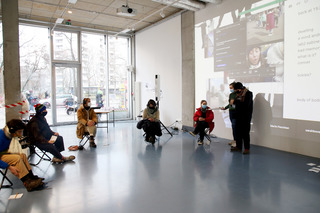
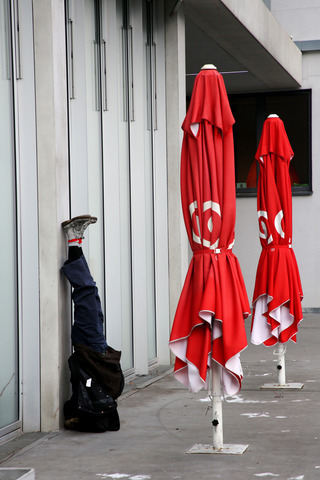
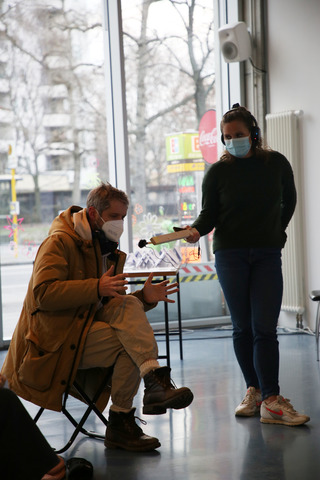
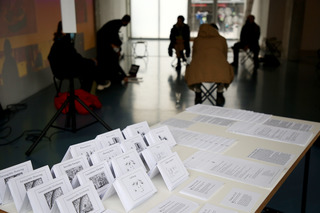
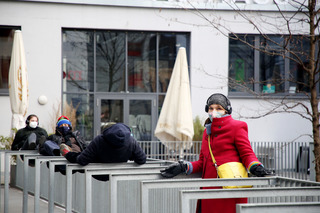
LAB VIER: BODY OF BODIES
By Arantxa Martínez (Berlin 10th - 13th November 2020)
Lab 4 had to be conducted in a reduced version since all public events had to be cancelled due to lockdown measures. Only members of the core team could join. Sharing the everyday traces with remote team members dissolved the limits between practice and observation even more. They served as a basis for a collage composed by Arantxa Martínez, who facilitated the lab. The final text comprises the activities, its language and concerns.
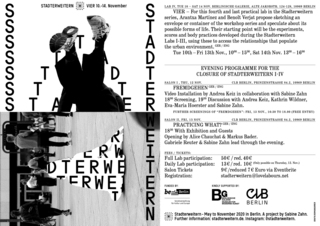
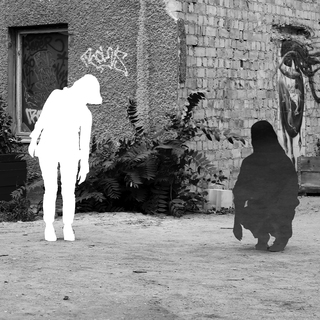
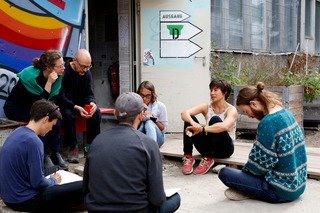
Dokumentation Lab Drei von 25. bis 29. August 2020Vortrag, Tanz & Lecture Performance
Mit: Katja Münker, Joshua Rutter, Arantxa Martínez, Christopher Dell, Thomas Hauck, Benoît Verjat, Martin Peschken
Katja Münker und Joshua Rutter verbanden für das Lab DREI im Haus der Statistik und am Alexanderplatz ihre künstlerischen und forschenden Praktiken zu einem kommunikativen Feld. Labor DREI eröffnete nicht-menschliche Perspektiven auf die Stadt, und fand aktive, sensorische und verkörperte Wege, um Beziehungen zu anderen Organismen (in der Stadt) zu stimulieren und zu diversifizieren. Das Lab experimentierte mit der spielerischen Aneignung von Orientierungs- und Kommunikationsstrategien anderer Spezies, und fragte dabei nach Erweiterungsmöglichkeiten der Sinne für die Stadt und für einen selbst.
Orientierungs- und Kommunikationsstrategien
In verschiedenen Praxen wie dem Ausloten von Schwerkraft, der Kommunikation zwischen pflanzlichen und tierischen Zellen, oder dem spielerischen Aushandeln von Führen und Folgen zwischen Tauben und Menschen, fragten die Teilnehmer*innen wie sie sich selbst und die Lebewesen und Dinge um sie herum anders erleben und ob dadurch ein anderes Imaginieren von Stadt möglich wird. Kann im Fremdwerden des Vertrauten eine Begegnung mit merkwürdigen oder unheimlichen Gefühlen entstehen? Kann sich aus Fremdheit oder unheimlichen Empfindungen auch Nähe entwickeln?
Einstiegpunkte der verkörperten Forschung waren somatische Praktiken und improvisatorische Experimente wie das Fortbewegen durch die Stadt als Schwarm-Organismus oder die Interaktion auf dem Alexanderplatz analog zu einer Wald-Ökologie.
Animal-Design, Improvisation und Tanz
Das Labor rahmten zwei Vorträge und eine Performance: Der Architekt Thomas Hauck stellte die Animal-Aided Design Methode (AAD) vor, die eine integrierte Betrachtung von Wohnungsbau und Naturschutz ermöglicht und diese häufig als unzusammenhängend betrachteten Bereiche verbindet. Für ein Lecture-Concert sprach der Architekturtheoretiker und Musiker Christopher Dell über sein Buch "The Improvisation of Space", das einen Paradigmenwechsel in der aktuellen Stadtforschung diagnostiziert: den Shift von der objektbezogenen hin zur handlungsbezogenen Sicht auf die Stadt. Die Tänzerin und Choreografin Arantxa Martínez zeigte zusammen mit zwei Performerinnen „a dance“ am Alexanderplatz. Der städtische Raum mit seinen vielfältigen Geräuschen, Bewegungen und Lebewesen durchzog dabei den Tanz, den Martínez als eine gegenwärtige Aktivität des „Tanz machens“ durch Stimme und Bewegung ausübte.
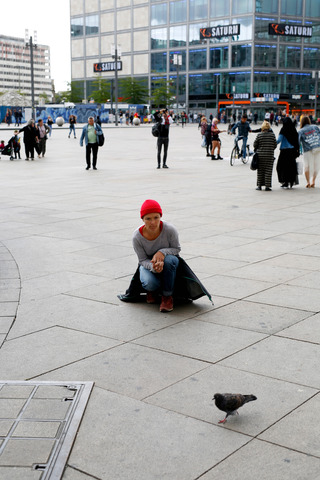
Von Katja Münker und Joshua Rutter
Mit diesen Partituren haben wir zu Beginn der Laborwoche verschiedene Strategien für die Annäherung an das Nichtmenschliche erkundet. Diese Strategien waren Selbstentfremdung, Begegnung mit anderen und fantasievolles Werden. So setzt der Score "Waldpartitur für viele Individuen in einer Stadt" eine Strategie des fantasievollen Werdens ein, während "Taubenpartitur für Individuen" ein Beispiel für die Begegnung mit anderen ist. Die Formulierung dieser Kategorien half uns, den Überblick über die angewandten Strategien zu behalten, wenn Ergebnisse neu entwickelt wurden oder wir neue Aspekte fanden.
Wichtige Fragen im Prozess waren: "Wie wirken sich diese Partituren auf unsere Beteiligung in der Stadt aus, wie verändern sie die Art und Weise, wie wir in der Stadt arbeiten und wie die Stadt uns behandelt? "Was könnte es bedeuten, intensive Erfahrungen des Andersseins zu machen?“ Zusammen rahmten die Fragen die Einübung und Neuentwicklung der Partituren wie eine Art darunter- und darüberliegende Strömung.
Das Partitur Dokument beginnt mit einer Liste von Voraussetzungen, die den Forschungsprozesse strukturieren und unser Vorgehen grundieren. Viel Spaß beim Erforschen!
By Katja Münker and Joshua Rutter
These scores feature different strategies for approaching the non-human. These strategies formed the basis for further development as self-alienation, encountering other, and imaginative becoming. For example “Forest-score for many individuals in a city” employs a strategy of imaginative becoming, while “Pigeon-score for individuals” is an example of encountering other. Formulating these categories helped us to keep track of which strategies we were employing as we redeveloped the scores later in the week, or even if we had found a new approach.
Important questions to keep in mind was “how do these scores effect our participation in the city, how do they change the way we do city and how the city does us?” and “What might it mean to have intense experiences of otherness?”. Together these questions provided a framing for the practicing and redevelopment of the scores, a kind of undercurrent and overcurrent.
The score document starts with a list of assumptions which helped structure the research process, providing a kind of reasoning for how we proceeded as we did. Enjoy to explore!
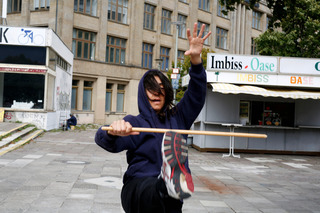
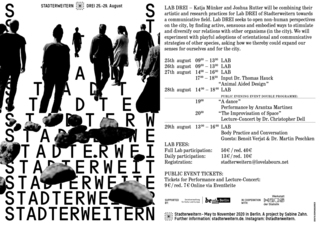
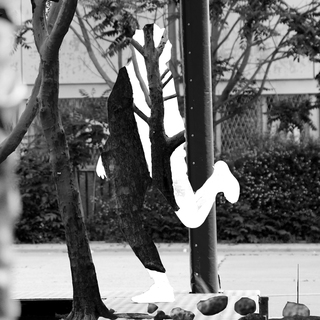
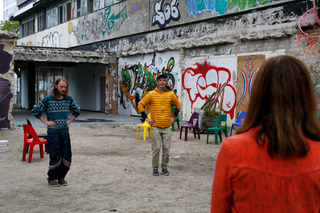
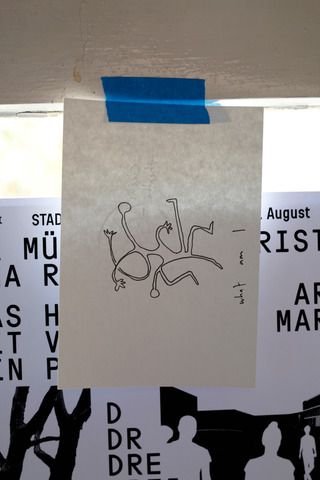
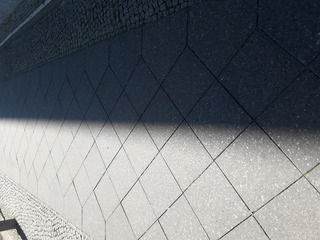
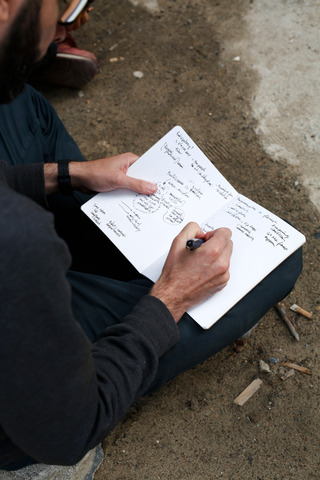
Dokumaterial-Labor ZWEI 9-13 Juni 2020
How to be a good neighbor?
Das Labor ZWEI von Stadterweitern von Sabine Zahn und Alice Chauchat untersuchte Akte des Wohnens/Dwellings und der Gemeinschaft/Companionship als physische Akte, die zur Gestaltung der Stadt beitragen. Wohnen wird im urbanen Diskurs oft benutzt, um zu unterscheiden zwischen dem, was Menschen tun - und wie das die Stadt macht - und dem, was für die Menschen geplant ist, um etwas zu tun (und wie das die Stadt macht). Das Labor erweiterte diesen Begriff, indem es Wohnen als eine Haltung und Praxis des Zusammenseins mit und in der Stadt verstand. Mehr als eine Unterscheidung wurde es als eine Brücke zwischen den verschiedenen Perspektiven und Untersuchungen eines Spektrums von temporärem und physischem Wohnen mit der Stadt verstanden.
Der Begriff der Stadt wurde als ein gemeinsamer Ort verstanden, als "eine belebte Mitte von Fremden - sowohl menschlichen als auch nicht-menschlichen, platziert in unmittelbarer Nähe." (Ash Amin "Animated space"). Hinzu kam der Begriff des Companionship (= Gemeinschaft, Gefährten) als eine Form des Umgangs mit diesen Beziehungen innerhalb der "belebten Mitte von Fremden".
Die Idee von Nachtbarschaftlichkeit und Nachbarschaftlichen diente als Bindeglied für beide Perspektiven des Wohnens und der Gemeinschaft. In einem Verständnis von physischen Praktiken mit und in der Stadt und ihren öffentlichen Räumen ging das Labor zwei Hauptfragen nach: Wie können wir „nachbarschaftlichen“? Wie wohnen?
Das Labor experimentierte anhand von Partituren, die aus der täglichen Praxis von Alice und Sabine hervorgingen und nicht nur physische, sondern auch schriftliche und aufzeichnenden Strategien beinhalteten. Die Erkundungen und Forschungen des jeweiligen Tages wurden dokumentiert, reflektiert, notiert und anschließend ausgetauscht, um die Beschreibung neu entwickelter Strategien zu präzisieren und ein gemeinsames Verständnis zu schaffen.
Das Labor ZWEI erweiterte die Ausgangsfragen: Können wir gemeinsam nachbarn? Wie wohnen und nachbarn wir mit unterschiedlichen Wohn- und Nachbarschaftsformen? Was macht das Wohnen/Dwelling mit der Stadt als Ganzes anstelle nur eines Stadtteils? Wie erweitert es die Stadt?
Diese Fragen leiteten das Labor und legten eine gemeinsame Forschungs- und Referenzbasis. Das auf dieser Seite gesammelte Material soll einen Einblick in die Forschung und das Programm geben und ist Referenzpunkt für das Lab THREE im August.
Documaterial Lab ZWEI 9-13 June 2020
How to be a good neighbour?
Lab ZWEI of Stadterweitern by Sabine Zahn and Alice Chauchat investigated acts of dwelling and companionship as physical acts, that contribute to making the city. Dwelling is often used in urban discourse to distinguish what people do - and how that makes the city - from what is planned for people to do (and how that makes the city). The Lab expanded that notion by understanding dwelling as an attitude and practice to being with and in the city. More than a distinction it was understood as a bridge between the different perspectives and investigations of a spectrum of temporary and physical dwelling with the city.
The notion of city was therefore understood as a shared place: "an animated middle of strangers - both human and non human, placed in close proximity“ (Ash Amin „Animated space“). Added to this was the notion of companionship as a form of handling such ways of relating within the "animated middle of strangers".
The idea of neighbourhoodness and neighbouring served as a link for both perspectives of dwelling and companionship. In an understanding of physical practices with and in the city and within its public spaces the Lab followed two main questions: How to neighbour? How to dwell?
The Lab experimented through scores that came out of the daily practices of both Alice and Sabine including not only physical but also writing and notational strategies. The explorations and research of each day were documented, reflected, notated and subsequenly exchanged, to find a precision in naming newly developed strategies and common understanding.
The Lab ZWEI expanded the initial questions by asking: Can we neighbour together? How to dwell and neighbour with different ways of dwelling and neighbouring? What does dwelling with the whole city rather than a specifc neighbourhood encompass? How does it expand the city?
Those questions guided the lab, and laid out a common ground to refer to and explore. The collected material on this page aims to give an insight into the research and program. It will also be a reference point for the Lab THREE in August.
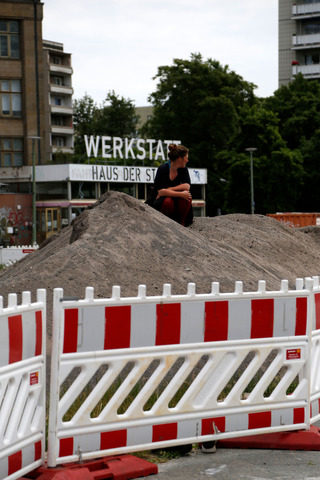
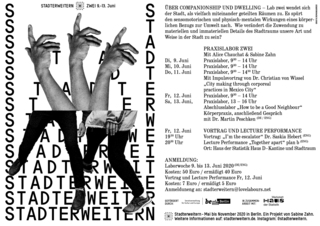
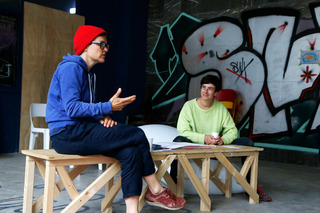
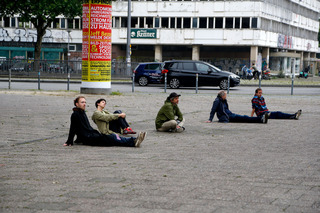
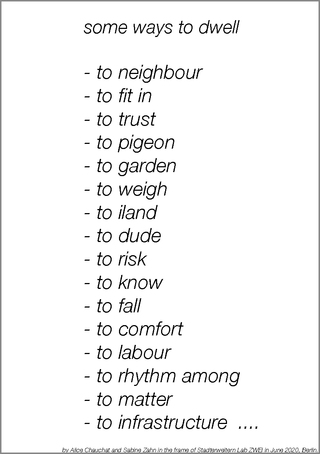

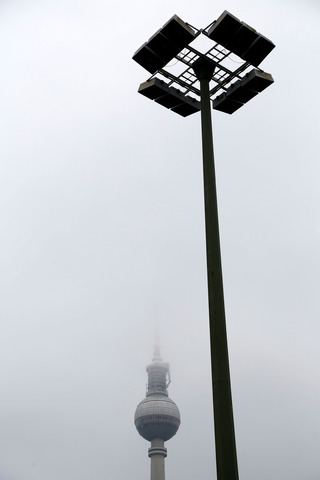

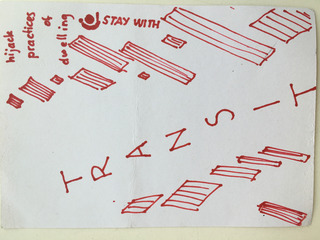
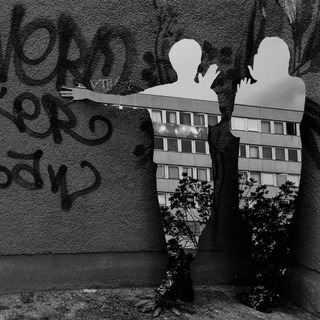
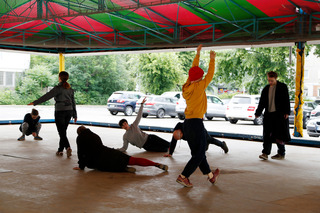

"Animated Space" by Ash Amin
This article seeks to extend a tradition initiated by Simmel that emphasizes the reciprocities of habitat and human behavior in urban public space, by reflecting on how the resulting atmospheres of place inflect sociality and politics.
In: Public Culture 27:2, 2015 by Duke University Press
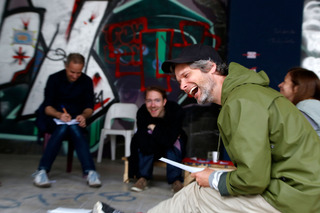
Entdeckt drei Scores für MITWELTEN - BEIWOHNEN
Hier findet ihr drei Scores für MITWELTEN - BEIWOHNEN, die wir während unserer Arbeit im Lab Zwei praktiziert und weiterentwickelt haben. Sie können einzeln oder in Abfolge praktziert werden. Wir begannen diese 5 Tage mit zwei praktischen Fragen: "Was bedeutet es, zu verweilen? Was bedeutet es, zu nachbarn? Indem wir to dwell (bewohnen) als eine temporäre, konstruktive und körperliche Aktivität des Handelns in der Stadt untersucht und neu definierten, ergaben sich neue Dimensionen. Zum einen, die Erweiterung des "Bewohnens" über eine bestimmte Wohneinheit (Wohnraum) hinaus auf einen öffentlichen Stadtraum, wie auch die Verdichtung der Zeitspanne auf die Zeit einer täglichen Praxis. Mitwelten und Beiwohnen verweisen dabei auf zwei wichtige Aspekte. MITWELTEN beschreibt den Aspekt der mit anderen geteilten Welt (Mitwelt) als Tätigkeit. BEIWOHNEN hiesse wörtlich bei etwas/jemandem oder nebeneinander wohnen, wird jedoch deutschen im Sinn von beachten oder begleiten benutzt.
Zum Score Dwelling / Neighbouring gehören einige "Hausregeln". Sie sind keine Regeln im herkömmlichen Sinn. Sie beschreiben eher, was der Score unserer Meinung nach in Bezug auf die Ethik des Be-wohnens und des Nachbarschaftlichen ermöglicht. Hervorgegangen sind sie aus den Lab Gesprächen. Die Liste mit dem Titel "Some Ways to Dwell" ist unvollständig. Sie kann als ein Dokument unserer gemeinsamen Woche gelesen werden, eine unmittelbare Sammlung von praktischen Varianten des Be-Wohnens.
Die Scores können mit einer beliebig großen Gruppe in jeder Art von städtischer Situation praktiziert werden, d.h. in einer Situation, in der auch andere und potentiell mehr Personen als eure Gruppe präsent sind. Es könnte gut sein, die räumliche Organisation der drei Scores zu bedenken. Wenn ihr damit arbeitet, freuen wir uns über Rückmeldungen und Ergänzungen, da weder die Scores noch unsere Arbeit hier abgeschlossen sind.
explore three Scores for MITWELTEN - BEIWOHNEN
Here you find three scores for MITWELTEN – BEIWOHNEN, which we practiced and/or generated together during Lab ZWEI. They can be practiced one at a time or in a sequence. We had began our week asking ourselves some very practical questions: “how to dwell? how to neighbour?”. As we set out to examine notions of dwelling in and with the city as a temporary, constructive and physical activity of doing the city, we both expanded the dwelling dimension by including the city beyond a specific dwelling unit (Wohnraum) and also condensed its timespam to the time of a daily practice. Mitwelten and Beiwohnen indicate two important aspects of these attempts to dwell and to dwell well. MITWELTEN is an older german word, which means worlding with or worlding together. BEIWOHNEN, literally translates into inhabiting with or dwelling besides. In contemporary german it means to attend to something.
The Dwelling / Neighbouring score is presented with some "house rules". Those are not prescriptive, rather they indicate what we think the score offers in relation to ethics of dwelling in relations to neighbours. They come out of our conversations after practicing it during the week.
The list called “Some Ways to Dwell” is open-ended. It can be read as a document of our week together, a provisory collection of dwelling variations.
You may practice each score with a group of any number of participants in any kind of lively urban situation; ie. a situation where also other people than your group are present. It might be helpful to have a person in charge of time. If you decide to practice the whole sequence as it is, it might be good to think about how you would like to direct the three steps in terms of space. We are glad if you work with this and let us know about your discoveries as neither the scores nor our work is finished here.
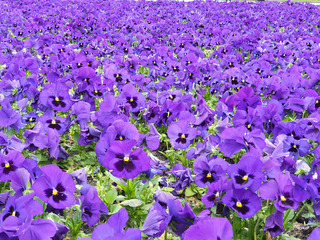
Materialsammlung Lab EINS 5.-9. Mai 2020
Im Labor EINS, begleitet von Daniel Belasco Rogers und Andrea Keiz, erweiterten die Teilnehmer*innen mit Hilfe von einfachen technischen Hilfsmitteln ihre Sinne und reflektierten welche Wirkungen der urbane Raum auf sie ausübte. Mit verschiedenen Scores und Aufgaben suchten sie nach neuen Wege, die Stadt zu beschreiben und wahrzunehmen.
Was passiert, wenn wir dem Windfluss an einer Häuserfront folgen? Welche nicht sichtbaren Wellen leiten uns? Hören wir mit den Knochen? Welche Bilder produziert unser Gehör und wohin führt uns die Bewegung unserer Augen? Die Erfahrungen und Reflexionen aller Teilnehmenden im Labor wurden am Ende einer jeden Tagessession mit den Anderen geteilt.
Diese Materialsammlung gibt einen Einblick in die Scores und Aufzeichnungen der Teilnehmer*innen. Fotos und Videos dokumentieren die Woche. Außerdem findet ihr eine Audiodatei des Vortrags "Im-Gehen -Verstehen" von Katja Münker, in dem sie über leibliche Prozesse und Handlungen, die unser Welt- und Selbstverstehen formen, spricht.
Documaterial Lab EINS 5-9 May 2020
In the laboratory ONE, accompanied by Daniel Belasco Rogers and Andrea Keiz, the participants* expanded their senses with the help of simple technical aids and reflected on the effects of urban space on them. With different scores and tasks they looked for new ways to describe and perceive the city. What happens when we follow the wind flow at the front of a house? Which non-visible waves guide us? Do we listen with our bones? What images do our hearing produce and where does the movement of our eyes take us? The experiences and reflections of all participants in the laboratory were shared with the others at the end of each daily session. This collection of material gives an insight into the scores and the recordings of the participants*. Photos and videos document the week. You will also find an audio file of Katja Münker's lecture "Im-Ghen -Verstehen" (Understanding in Walking), in which she talks about bodily processes and actions that shape our understanding of the world and ourselves.
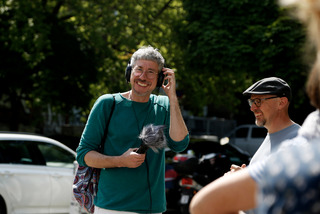
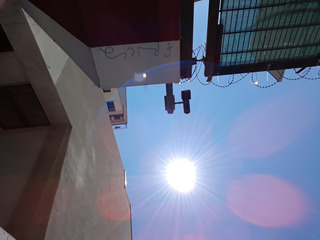
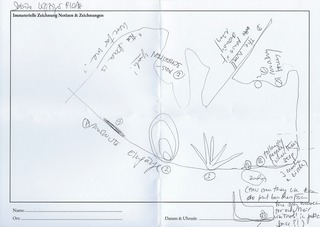
Sie bestehen:
- Aus einer Einleitung zum Ort, an dem wir im LabEINS gearbeitet haben. Du kannst Dir aber auch einen anderen Ort aussuchen.
- Der Beschreibung der Aufgabe. Sie ist als Vorschlag zu verstehen, um sich sinnlich auf die Stadt einzulassen und herauszufinden, welche Aspekte der Stadt du dann entdeckst.
- Einige Fragestellungen und Vorschläge für Feedback, und um deine Erfahrungen zu reflektieren. Bitte schickt uns eure Erfahrungen per email an stadterweitern@lovelabours.net. Das kann kurz oder lang und in jeder Form sein: Notizen, Bilder, Geschriebenes, Audio oder Film. Sie fließen dann in die Forschungsergebnisse von Stadterweitern ein.
We have selected and adapted some tasks from the labEINS that you could perform wherever you are. In the downloads you´ll find:
- The introduction to the place, where we tested the score each day. You can choose your own spot to practice.
- The description of the score. It is a proposal for you. You can make your own scor out of it. It serves to focus the attention to sensorial experience to discover different aspects of the city.
- Some points for reflection and feedback. We would be glad to recieve your notes, in whatever form you prefer, so that your experience can also feed into the Stadterweitern research.
5 bis 15 Minuten Übungen bevor Du beginnst,
den Ort mit den Scores zu erkunden.
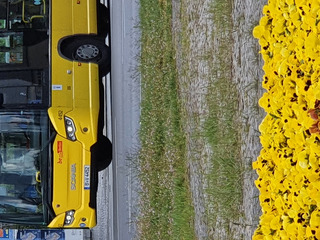
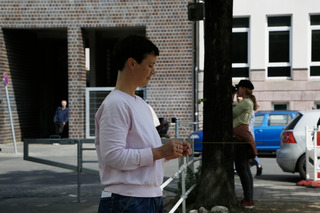
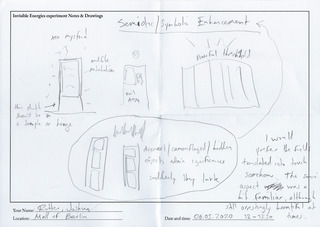

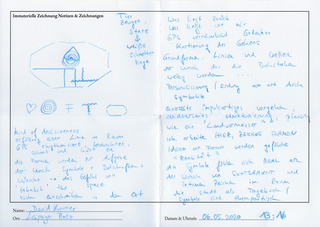
Lecture von Katja Münker Im-Gehen-Verstehen nachhören. Vom 6.5.2020 in Berlin vor dem Haus der Kulturen der Welt während des Gehens vor Ort aufgezeichnet. Es empfiehlt sich beim Zuhören selbst in Bewegung zu bleiben.
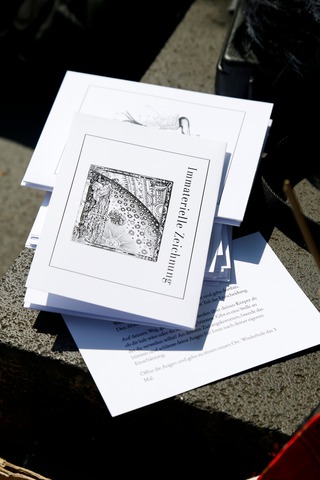
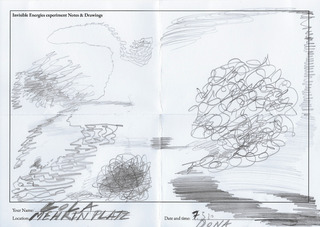
Erkundete Plätze vom 5. bis 9. Mai 2020 / Corona Shutdown
- Ernst-Reuter-Platz
- Leipziger Platz mit Haus der Kulturen der Welt
- Mehringdamm
- Theodor-Wolff-Platz
Location information
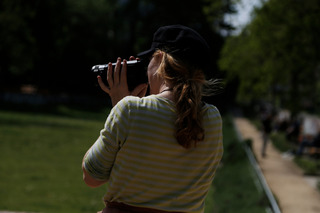
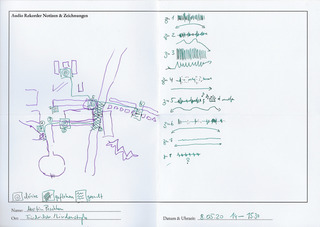
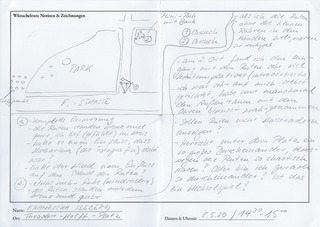
JavaScript is turned off.
Please enable JavaScript to view this site properly.